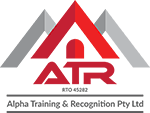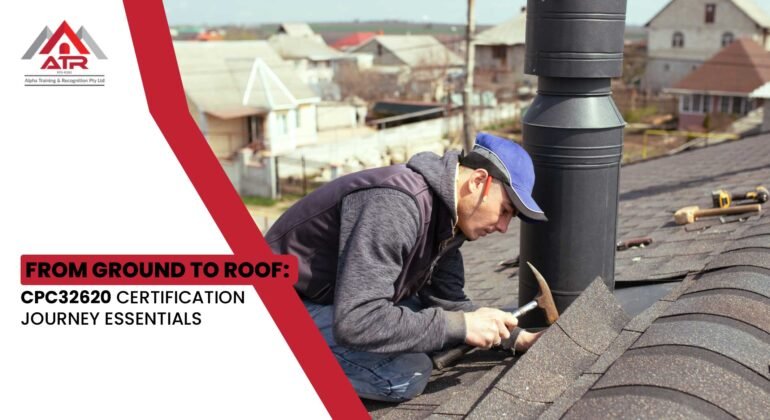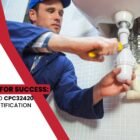Overview:
Welcome to the world of roof plumbing, where precision, craftsmanship, and safety are paramount. In this detailed guide, we provide essential insights into the CPC32620 Roof Plumbing certification journey. From mastering roofing techniques to understanding safety protocols and regulations, we cover all aspects of roof plumbing to equip you for success in this dynamic field.
1. Understanding Certificate III in Roof Plumbing
Certificate III in Roof Plumbing (CPC32620) is the gateway to a rewarding career in roof plumbing. This qualification equips individuals with the knowledge and skills needed to install, maintain, and repair roofing systems. Think of CPC32620 as the foundation upon which you’ll build your expertise in roof plumbing – just as a solid foundation supports a structure, this certification lays the groundwork for your career in the roofing industry.
2. Exploring Roofing Installation Techniques
Roofing installation is a multifaceted process that requires precision and attention to detail. From laying roofing materials to sealing seams and joints, mastering installation techniques is essential for creating weatherproof and durable roofs. Imagine a skilled artisan crafting a mosaic, carefully placing each tile to create a beautiful pattern – similarly, a proficient roof plumber meticulously installs roofing materials to create a seamless and structurally sound roof.
3. Understanding Guttering Systems
Guttering systems play a crucial role in directing rainwater away from the roof and foundation of a building, preventing water damage and erosion. Plumbers must understand the principles of gutter design, installation, and maintenance to ensure proper water drainage and management. Think of guttering systems as the arteries of a building, channeling rainwater safely away – just as arteries transport blood throughout the body, gutters protect the structural integrity of a building by diverting water away from vulnerable areas.
4. Mastering Waterproofing Methods
Waterproofing is essential for protecting roofs and buildings from water intrusion and damage. Roof plumbers employ various waterproofing methods, such as membranes, coatings, and sealants, to create a watertight barrier against moisture. Envision a skilled alchemist mixing ingredients to create a powerful elixir – similarly, a knowledgeable roof plumber combines waterproofing materials and techniques to create a robust shield that safeguards buildings from water infiltration and structural decay.
5. Prioritizing Occupational Health and Safety (OH&S) in Roofing
Occupational health and safety (OH&S) is a top priority in roof plumbing, where workers face potential hazards such as falls, exposure to extreme weather conditions, and handling heavy materials. Roof plumbers must adhere to strict safety protocols and regulations to prevent accidents and injuries on the job. Imagine a tightrope walker performing high above the ground, relying on safety harnesses and precautions to stay safe – similarly, a vigilant roof plumber follows safety guidelines and uses protective equipment to mitigate risks and ensure a secure working environment.
6. Managing Drainage Systems
Effective drainage systems are essential for removing rainwater and preventing water pooling and damage to roofs and buildings. Roof plumbers design, install, and maintain drainage systems, including downpipes, drains, and scuppers, to facilitate proper water flow and drainage. Think of drainage systems as the circulatory system of a building, carrying away excess water to prevent stagnation and flooding – just as blood vessels transport fluids throughout the body, drains and pipes protect buildings from water-related issues by promoting efficient water drainage.
7. Installing Metal Roofing
Metal roofing is a popular choice for its durability, longevity, and aesthetic appeal. Roof plumbers must possess expertise in installing metal roofing materials, including corrugated iron, Colorbond steel, and zincalume, to create robust and weather-resistant roofs. Imagine a skilled blacksmith forging metal into intricate shapes and patterns – similarly, a proficient roof plumber shapes and installs metal roofing materials with precision and skill, creating roofs that withstand the elements and stand the test of time.
8. Mastering Roof Flashing Techniques
Roof flashing is crucial for preventing water intrusion at vulnerable areas, such as roof intersections, valleys, and penetrations. Roof plumbers utilize various flashing materials, such as lead, copper, and aluminum, to create watertight seals and protect against leaks. Envision a master sculptor carving intricate details into a marble statue – similarly, a skilled roof plumber crafts and installs flashing components with meticulous attention to detail, ensuring a seamless and watertight transition between roof surfaces and protrusions.
9. Conducting Roof Maintenance
Regular maintenance is essential for preserving the integrity and longevity of roofing systems. Roof plumbers perform inspections, repairs, and preventative maintenance to identify and address issues before they escalate into costly problems. Think of roof maintenance as preventive medicine for buildings, preserving their health and vitality – just as regular check-ups and treatments keep the body healthy, proactive maintenance keeps roofs in optimal condition, protecting buildings from water damage and structural deterioration.
10. Ensuring Roof Insulation and Ventilation
Proper insulation and ventilation are critical for maintaining indoor comfort, energy efficiency, and moisture control in buildings. Roof plumbers install insulation materials and ventilation systems to regulate temperature, reduce energy consumption, and prevent condensation buildup in attics and roof spaces. Imagine a skilled architect designing a building with optimal airflow and thermal comfort – similarly, a knowledgeable roof plumber designs and installs insulation and ventilation systems that enhance the performance and livability of buildings, creating healthy and energy-efficient environments for occupants.
11. Embracing Sustainable Roofing Practices
In today’s environmentally conscious world, sustainable roofing practices are gaining traction. Roof plumbers are increasingly incorporating eco-friendly materials, such as recycled metal and solar panels, into their installations to reduce environmental impact and promote energy efficiency. Envision a guardian of nature, tending to the earth with care and reverence – similarly, a conscientious roof plumber embraces sustainable practices, creating roofs that harness renewable energy and minimize carbon footprint, contributing to a greener and more sustainable future.
12. Adhering to Roofing Regulations and Standards
Roof plumbers must adhere to building codes, regulations, and industry standards governing roofing construction and installation. Compliance with these requirements ensures the safety, structural integrity, and performance of roofing systems. Think of roofing regulations as the rules of the road for roof plumbers, guiding their actions and decisions to ensure compliance and quality workmanship – just as traffic laws regulate drivers on the road, roofing standards govern plumbers in their craft, ensuring that roofs meet safety and quality standards for the protection of occupants and property.
13. Installing Guttering Systems with Precision
Gutter installation requires careful planning and execution to ensure proper water drainage and prevent leaks and overflows. Roof plumbers measure, cut, and secure gutters to the roofline, ensuring a snug fit and adequate slope for water flow. Envision a skilled craftsman shaping wood to create a seamless joint – similarly, a meticulous roof plumber installs gutters with precision and attention to detail, creating a seamless and efficient system for channeling rainwater away from the roof and foundation of a building.
14. Implementing Leak Detection Techniques
Leak detection is a crucial skill for roof plumbers, allowing them to identify and repair leaks before they cause extensive damage to buildings. Roof plumbers utilize various techniques, such as visual inspection, pressure testing, and thermal imaging, to pinpoint the source of leaks and take corrective action. Imagine a detective searching for clues to solve a mystery – similarly, a skilled roof plumber investigates signs of water damage and traces leaks to their origin, employing detective-like skills to restore the integrity of roofing systems and protect against water intrusion.
15. Emphasizing Safety Protocols for Roof Plumbing
Safety is non-negotiable in roof plumbing, where workers face risks such as falls from heights, exposure to hazardous materials, and handling heavy equipment. Roof plumbers must undergo safety training and follow strict protocols to prevent accidents and injuries on the job. Envision a tightrope walker performing a high-wire act with a safety net below – similarly, a cautious roof plumber takes precautions and uses safety equipment to mitigate risks and ensure a secure working environment, protecting themselves and their colleagues from harm.
In conclusion:
embarking on the journey to CPC32620 Roof Plumbing certification is a comprehensive endeavor that requires mastery of various skills, techniques, and safety protocols. By understanding roofing installation techniques, guttering systems, waterproofing methods, and other essential aspects of roof plumbing, aspiring plumbers can build a solid foundation for a successful career in this dynamic and essential field. With CPC32620 certification as their credential, they can ascend to new heights in the roofing industry, shaping the skyline and safeguarding the built environment with skill, precision, and dedication.



